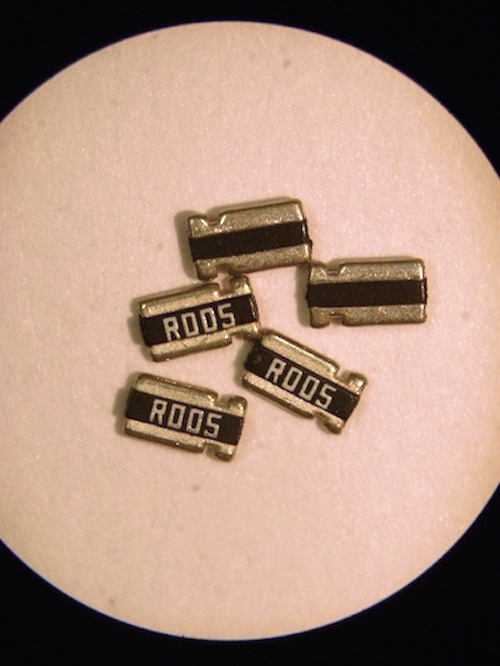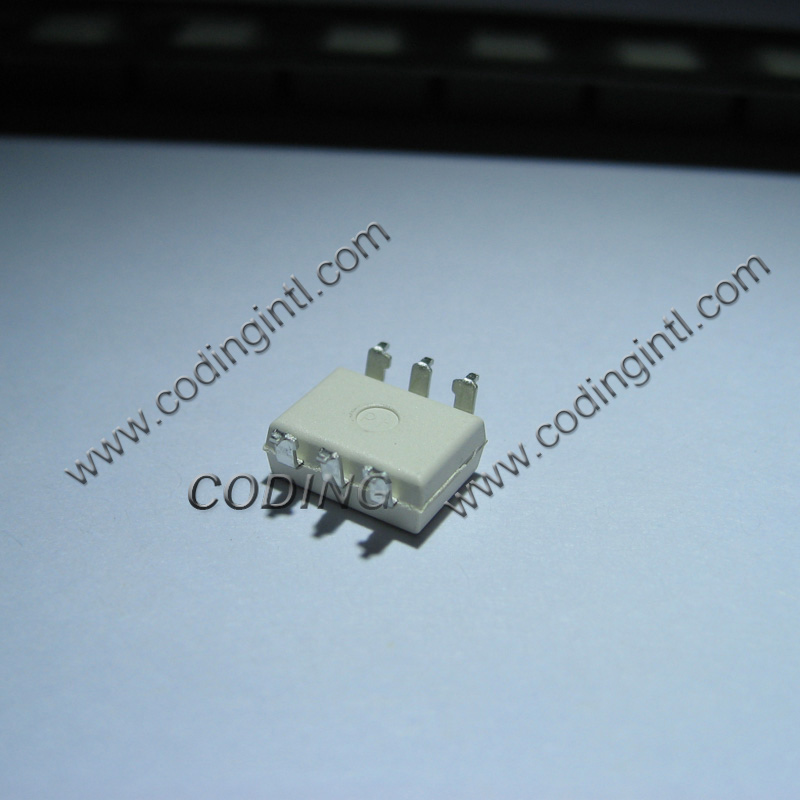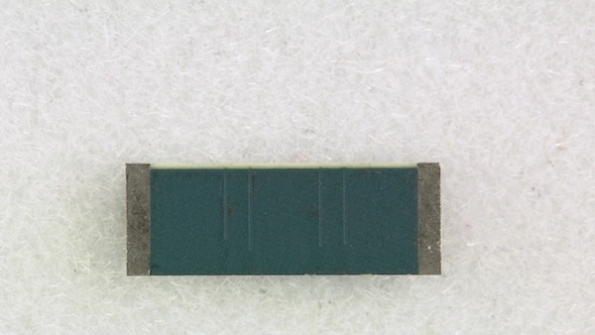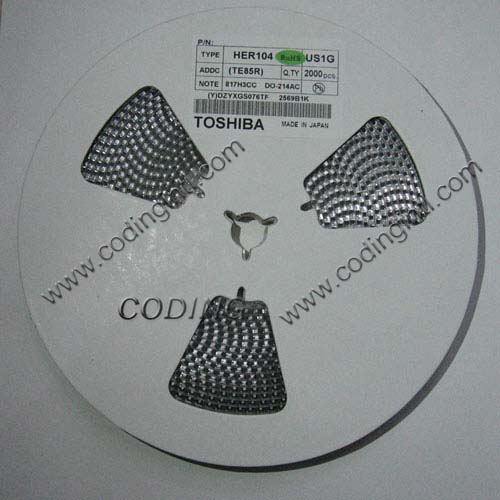Hybrid Circuits Optimize Gate Drive and Protect High Power IGBT Modules
High power IGBT module applications usually require a completely isolated gate drive, as shown In Figure 1. This circuit isolates the logic level control from fault feedback signals using optocouplers and separate isolated power supplies for each gate driver. Its advantages include:
Stable on and off drive driving voltages that are independent of the power device switching duty cycle
Ability to allow very high output currents for large IGBT modules
Isolation of power circuit switching noise and high voltages from control circuits
Local power that is available for protection circuits, such as desaturation detection.
Among the disadvantages of this type of driver are the cost, complexity and board space required for all the isolated power supplies. In addition, these circuits can be difficult to develop due to the severe requirements for noise immunity and high isolation voltage. To simplify the design of isolated gate drive several new hybrid ICs have been developed to supply gate drive, short circuit protection and isolated gate drive power.
To understand the new driver circuit details, first look at the typical gate drive circuit illustrated in the simplified circuit schematic of Figure 2. The primary function of the gate drive circuit is to convert logic level control signals into the appropriate voltage and current for efficient, reliable, switching of the IGBT module. An output driver stage consisting of small power MOSFETs or bipolar transistors convert the logic levels by alternately connecting the IGBT’s gate to the appropriate on and off voltages (VON and VOFF, respectively). The driver stage devices and series gate resistance, RG, must be selected to provide the appropriate peak current for charging and discharging the IGBT’s gate. Most gate drive circuits also isolate the low level logic signals from the dangerous high voltage present in the power circuit. The driver must also be immune to the severe EMI produced by the fast switching, high voltage, high current IGBT power circuit. Careful layout and component selection is critical to avoid problems with coupled noise.
TURN-ON VOLTAGE (VON)
To ensure collector-to-emitter conduction in an IGBT module, a positive voltage must be applied to the gate. The absolute maximum voltage that can safely be applied tothe IGBT’s gate is usually specified on the device data sheet. For H- and F-Series IGBT modules it is 20V. Applying more than 20V may break down the IGBT’s gate oxide, causing permanent damage. The 20V upper limit must be restricted even further if short circuit survival is required. The short circuit withstand time (tw) of a given device is inversely proportional to the product of applied voltage and short circuit current. The short circuit current increases with increasing gate voltage, thus degrading the withstand time. The H- and F-Series modules are guaranteed to survive a low impedance short circuit for 10µsec with an applied gate voltage of 15V± 10%.
The usable lower limit for the on-state gate voltage is decided by the IGBT’s transconductance or gain, and acceptable switching losses. Figure 3 shows a typical output characteristics for a 1200V, 100A F-series IGBT module; about 10V on its gate is enough to support its peak current rating (ICM=2×IRATED).
A 10V gate drive would be sufficient to turn the device on fully, but it may not be sufficient to obtain efficient switching. If 10V were used for VON, it would cause a long dynamic saturation (slow turn-on) because the gate voltage takes a long time to reach 10V as it exponentially charges through the series gate resistance. For optimum performance, a turn-on gate drive should be 15V±10%. Using a voltage in this range will ensure that the device stays fully saturated and switches on efficiently while maintaining good short circuit durability.
Continue to next page
TURN-OFF VOLTAGE
Recommended off bias for large IGBT modules is at least -5V, which reduces turn-off losses and provides additional dv/dt noise immunity. One reason large IGBT modules generally require a stronger off bias than other power MOS devices is that they typically operate at higher voltages, resulting in increased dv/dt coupling of switching noise. Also, large IGBT modules constructed from parallel chips have internal gate resistors in series with each chip. Even if a low impedance short is applied at the module’s external terminals, voltage can develop at the gate of the IGBT chip when Miller effect current flows through the internal resistors.
The recommended off bias for IGBT modules is in the -5V to -15V range. Gate drives greater than +20V and more negative than -20V must be avoided because they may damage the IGBT.
SERIES GATE RESISTANCE
The external series gate resistance (RG) has a significant effect on the IGBT’s dynamic performance. The IGBT is switched on and off by charging and discharging its gate capacitance. A smaller series gate resistor will charge and discharge the gate capacitance faster, resulting in increased switching speed and reduced switching losses. Besides decreased switching losses, a lower series gate resistance also helps to improve dv/dt noise immunity. Smaller series gate resistors more effectively shunt away Miller effect and dv/dt coupled noise currents that could cause dangerous voltages to appear on the IGBT’s gate.
The minimum value of the series gate resistor for turn on is usually limited by the recovery characteristics of the free wheel diode. In hard switching inductive load circuits the di/dt stress at free wheel diode recovery is a function of the series gate resistance. If the di/dt stress becomes too high, the free wheel diode may become “snappy” and result in undesirable oscillations, high recovery currents, and transient voltages. F-Series IGBT modules have a newly developed proton beam irradiated soft recovery diode that virtually eliminates these effects. A larger series gate resistance may be desirable to help reduce transient voltage during turn-off switching. Unfortunately, in most cases the series gate resistance must be increased substantially to have any significant impact on the turn-off fall time. Usually, such an increase in series gate resistance will result in poor dv/dt noise immunity and excessive switching losses. It is usually better to reduce transient voltages with improved power circuit layout and/or snubber designs.
Giving consideration to all of the above issues, a recommended range of gate resistance has been published for all H-Series and F-Series IGBT modules. The lowest value in the recommended range is the value used in the conditions for switching times on the device data sheet. The maximum value is normally 10 times the minimum.
GATE DRIVE POWER
When switching, the IGBT consumes power from the gate drive power supply. This power is a function of operating frequency, on and off bias voltages, and total gate charge. The average current that must be supplied by the gate drive power supply is:
IS= QG × f (1)
Where:
QG= Total gate charge
f = Operating frequency
Continue to next page
The total gate charge can be obtained from published curves. Figure 4 shows a gate charge curve for a 600A, 1200V F-Series IGBT module. The total gate charge for the transition of gate voltage from zero to +15V can be read directly from the curve (6500nC). For the transition from 0 to -15V, the QG curve is extended along its initial slope to obtain an additional 2000nC. For operation of this device at 10kHz the required supply current is:
IS= 8500nC × 10kHz = 85mA
The total power that must be supplied by the gate drive power supply is simply IS × ΔVG. For the CM600HU-24F with ±15Vgate drive this power is:
PG= 85mA × 30V = 2.55W
Considering that this device is rated at 600A and 1200V, this drive power is quite small.
PEAK DRIVE CURRENT
Although the average drive power is small, efficient switching of large IGBT modules requires high peak currents. Assuming that the gate drive circuit is infinitely fast and its output impedance and inductance are negligible, the peak gate current is:
I G(PEAK) =ΔVG + RG (2)
For the CM600HU-24F the minimum recommended RG is 1.0Ω. From Equation (2) the peak drive current for a ±15V gate drive is:
I G(PEAK) = 30V/1.0Ω = 30A
The actual peak current is usually considerably less than this value because the assumptions made above are not generally true. However, designing the gate drive circuit for this theoretical maximum output current is usually a good general practice.
GATE DRIVE CIRCUIT
Now that the basic requirements for reliable, efficient gate drive have been reviewed, circuit design issues come next. The layout and component selection for the gate drive are critical to achieve the operating characteristics outlined above.
IGBT gate drive circuits are subjected to high common mode dv/dt. The driver circuit layout must minimize parasitic capacitances between adjacent drive circuits to prevent C × dv/dt noise coupling. The isolating interface for the gate drive signals must be designed with appropriate noise immunity. If a pulse transformer is used, its interwinding capacitance must be small. If optocouplers are used they must be able to isolate both high common mode voltage and transient noise. Optocouplers should have a guaranteed minimum common mode transient noise immunity of 10kV/µsec specified at a common mode voltage (VCM) of at least 1000V.
Layout of the isolating interface must minimize parasitic capacitance between the primary and secondary. Use of ground plane to shield layers can be very helpful in controlling noise coupled through stray capacitances by the power circuit’s high dv/dt. If twisted pair gate drive leads are used, the pairs should be kept separated from each other. If they must be bundled, shielded cables with the shield tied to emitter potential of the IGBT being driven should be used. In general, minimizing gate drive lead length helps prevent noise coupling. Minimum length wiring also helps to achieve the high peak drive currents needed for efficient switching. The best practice is to mount the driver circuit directly on the IGBT module.
GATE VOLTAGE CONTROL
Control of the steady-state on and off gate voltage is easily accomplished through appropriate regulation of the gate drive power supply. However, during switching, and especially during short circuit operation, Miller effect currents cause I × R voltage on the series gate resistor and L di/dt voltage on gate driver parasitic inductance. These voltages can add to the normal on-state gate voltage, causing a surge voltage on the gate.
Continue to next page
During switching, gate voltage surges must be maintained to less than the device’s maximum gate voltage rating (usually 20V). Under short circuit conditions gate voltage surges can cause degradation of short circuit withstanding capability by allowing higher than normal currents to flow. To control gate voltage surges it is often desirable to implement gate voltage clamping on the gate side of the series gate resistor. The simplest form of the gate voltage clamping is back-to–back zener diodes connected from gate to emitter as shown in Figure 2. For the gate voltage clamping circuit to be effective, it must be connected as close as possible to the gate and emitter terminals of the IGBT module. For 15V gate drive 16V to 18V zeners are typically used.
Figure 5 shows an even more effective clamping circuit. Here, the gate voltage is diode-clamped to a local capacitor charged to the turn-on gate voltage. Gate voltage clamping becomes critical with larger IGBT modules because Miller effect currents are more severe. Long gate drive leads also aggravate gate voltage surges, making gate voltage clamping even more necessary.
Trench gate F-series IGBT modules have gate voltage clamping zeners built into the internal real time control (RTC) circuit. This circuit combined with the lower reverse transfer capacitance of the trench IGBT chip eliminates the need for external gate voltage clamping circuits in most applications.
ISOLATED POWER SUPPLIES
As shown in Figure 2, the gate drive circuit requires VON and VOFF dc power supplies. In most high power applications it is necessary to provide isolated power supplies that can float as needed to the emitter potential of the IGBT being driven. Isolated power supplies are required for the high side gates in single- and three-phase inverter circuits because the emitter potential of the high side IGBT changes when the low side IGBT is switched. Isolated power supplies are also recommended for low side gate drive in high power applications to avoid noise caused by L × di/dt voltages induced in the stray inductance of the negative dc bus. The gate drive power supply should have high voltage insulation designed to reliably withstand the high voltages in the power circuit. It is also critical that the power supplies have minimum capacitance between each other and the logic circuits in order to avoid dv/dt induced noise. A common source of unwanted capacitance is adjacent or overlaping windings on the power supplies isolation transformer.
To simplify the task of generating the isolated power supplies, a single-in-line isolated dc-dc converter has been developed. The M57145L-01 shown in Figure 6 produces a regulated +15.8V/-8.2V output from an input of 12V to 18V dc. This new dc-dc converter is designed to work with hybrid IC gate drivers.
SHORT CIRCUIT PROTECTION
IGBT modules are designed to survive low impedance short circuits for a minimum of 10µsec. It is usually desirable to include short circuit protection in the gate drive circuit to provide the fast response required for protection against severe low impedance short circuits. Typically, this protection has been provided by collector-emitter voltage sensing or so-called “desaturation detection.” F-Series IGBT modules use another technique: “RTC detection.”
Figure 7 shows a block diagram of a typical desaturation detector. Here, a high voltage fast recovery diode (D1) is connected to the IGBT’s collector to monitor the collector-to-emitter voltage. When the IGBT is in the off state, D1 is reverse biased and the (+) input of the comparator is pulled up to the positive gate drive power supply, which is normally +15V. When the IGBT turns on, the comparators(+) input is pulled down by D1 to the IGBT’s VCE(sat). The (-) input of the comparator is supplied with a fixed voltage (VTRIP) that is typically set at about 8V. During normal switching the comparators output will be high when the IGBT is off and low when the IGBT is on. If the IGBT turns on into a short circuit, the high current will cause the collector-emitter voltage to rise above VTRIP even though the gate of the IGBT is being driven on. This abnormal presence of high VCE when the IGBT is supposed to be on is often called desaturation. Desaturation can be detected by a logical AND of the driver’s input signal and the comparator output. A short circuit is indicated if the output of the AND gate goes high. The output of the AND gate is used to command the IGBT to shut down to protect it from the short circuit.
Continue to next page
A delay (tTRIP) must be provided after the comparator output to allow for the normal turn on time of the IGBT. The tTRIP delay is set so that the IGBTs VCE has enough time to fall below VTRIP during normal turn on switching. If tTRIP is set too short, erroneous desaturation detection will occur. The maximum tTRIP delay is limited by the IGBT’s short circuit withstanding capability. For H-Series and F-Series IGBT modules this limit is 10µsec.
Several hybrid IC gate drivers implementing desaturation detection are single-in-line packaged and have outlines similar to the M57962L shown in Figure 8. When desaturation is detected the hybrid gate driver performs a soft shut down of the IGBT and starts a timed (tRESET) 1.5msec lockout. The soft turn-off helps to limit the transient voltage that may be generated while interrupting the large short circuit current flowing in the IGBT. During the lockout a fault feedback signal is asserted and all input signals are ignored. Normal operation of the driver will resume after the lockout time has expired and the control input signal returns to its off state.
RTC DETECTION
F-Series trench gate IGBT modules have a built in RTC (Real Time Control) circuit that limits short circuit current and maintains 10µsec short circuit durability. When excessive current flows in the device, the RTC circuit activates and reduces the gate voltage to limit the short circuit current. The RTC circuit shown in Figure 9 is similar to the desaturation detector except that the comparators (-) input is connected to the gate of the IGBT module. The (+) input of the comparator is supplied with a fixed voltage (VTRIP) set at about 3V below the positive gate drive supply voltage. In the normal on state, the gate of the IGBT is at nearly the positive supply voltage, which exceeds VTRIP and makes the comparator output low. In the off state the gate voltage is at nearly the negative gate drive supply voltage, which is less than VTRIP, making the comparator output high. If a short circuit occurs, the RTC circuit inside the F-Series IGBT module activates and pulls the gate voltage down. If the gate voltage becomes less than VTRIP when the IGBT is being commanded on, the RTC activates. RTC operation is detected by a logical AND of the gate driver’s input signal and the comparator’s output. When the output of the AND gate goes high, a short circuit is indicated. The output of the AND gate is used to command the IGBT to shut down to protect it from the short circuit. A delay (tTRIP) must be provided after the comparators output to allow for the normal rise of gate voltage at turn on. The tTRIP delay is set so that the gate voltage has enough time to exceed VTRIP during normal turn on switching. If tTRIP is set too short erroneous short circuit detection will occur. The maximum tTRIP delay is limited by the IGBT’s short circuit withstanding capability. For F-Series IGBT modules this limit is 10µsec.
The M57160L-01 hybrid gate driver circuit implements RTC This protection scheme is superior to conventional desaturation detection, because it avoids the need for high voltage components and reduces spacing requirements on the gate drive pc board.
Fully-isolated gate drive circuits with short circuit protection, like the one shown in Figure 1, can be realized by combining the hybrid gate drive circuits with the hybrid dc-dc converter described above. Figure 10 shows a complete gate driver constructed with only eight components using hybrid circuits.
Established in 2004, Coding International Co., Ltd (shenzhen Coding Technology Co.,Ltd) is a gather the development, production, marketing combine together of the semi-conductor professional company. We can provide a wide range of capabilities in research and production such as all kinds of Diode, Triode transistor, Audions, Triac, Dynatrons, Thyristor, LED product, Optocoupler, Silicone Bridge, IGBT power Module and Surge arrester, ICs, ect.
This article by blogcoding original compilation, please indicate the source:http://www.codingintl.com/blog/1172.html





Post a comment